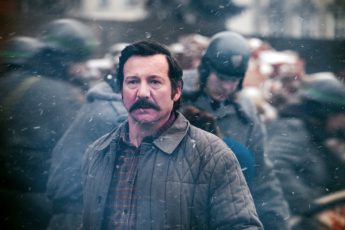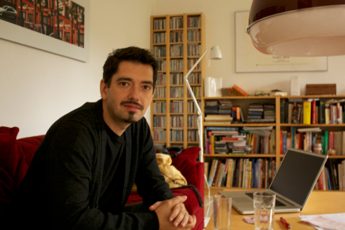
This month, we look back at our coverage of Hungarian cinema, our regional focus in 2013, which will conclude with a special video art issue in December. In 2014, we will turn to Poland.
After travelling to Romania (2011) and the Balkans (2012) in the first two years of our journal’s existence, Hungary was our first choice made on strong political grounds. As the worrying changes that Viktor Orban undertook since becoming Prime Minister with his center-right party Fidesz in 2010 have had a considerable impact on the Hungarian film industry, we were interested in how cinema would deal with this problem both on artistic and institutional levels. While cultural, philosophical and stylistic considerations constitute the core of our exegesis, political and social questions – as far as they are represented, or, yet more interestingly, evidently underrepresented – are crucial for the understanding of a country’s national identity both on and off screen. In Hungary’s case, this assumption is a good starting point for understanding a film landscape which is divided between arthouse fanatics vs. mainstream/independent apostates and apolitical filmmakers vs. quasi-activists. While some directors (notably Béla Tarr) have told us that they do not identify with Hungary on an artistic or cinematic level, others have exposed little interest in the fortunes of their country even beyond cinema (see Benedek Fliegauf), while yet others (see György Pálfi) have explicitly denied a Hungarian cinematic identity. In line with this year’s coverage, this month’s editorial features an outline of the dynamics of Hungarian politics and film, as well as an analysis of possible connections.
2013 was another eventful year in Hungary’s colorful political landscape. At present, the center-right government of Prime Minister Viktor Orban seems to be anticipating the election campaign via governance (parliamentary elections are expected in April or May 2014). Fidesz’s populist measures have been beneficial for many: teachers received a 34 percent wage increase (with more to come), household energy prizes have been driven down, and tax breaks reached families with children. And after years of recession, the economic growth (if low) was praised by Orban as a consequence of his anti-austerity measures. On the other hand, minorities have suffered from racial segregation in schools, the notorious media laws have suffocated the press, and the constitutional court remains weakened (the latest wave of contested constitutional changes came in March, but were partially revoked in response to protests from Brussels). A government plan to enfranchise ethnic Hungarians abroad is problematic both with regard to future elections and the underlying nationalist rhetorics. Orban’s two-faced socialist/nationalist policies are unequivocally authoritarian at heart, but will Orban be forced to leave office in 2014?
In late August, Hungary’s two main opposition parties were finally able to reach a deal to challenge Fidesz in the parliamentary elections next year in a coalition. In the past, Orban has benefited from divisions on the left which is still unpopular among many after years of inefficient and corrupt governance. The last Socialist government tried to bring the economy back on track with harsh austerity measures. And with Fidesz controlling large parts of the country’s public life and economy (the central bank’s rate-setting panel for instance is made up entirely of members appointed by Orban), a victory of the left would hardly guarantee a stable government. But should voters instead opt for a stable government which has consolidated its powers while disadvantaging minorities? Will it even be possible to undo the damage Orban has done if Fidesz wins once again? In many ways, the upcoming elections are a test of principle: Hungarians must prove that they are ready to punish Orban for his authoritarianism. If they fail to do so, the Socialists’ defeat in 2010 will seem like an economic decision from voters, and not one made on ethical grounds. As of now, Fidesz is leading in opinion polls, but around half of the country’s voters are still undecided.
In recent interviews with Hungarian directors, rather than open disapproval, we have witnessed circumspect reservation, explicit relativization, and outright disinterest apropos addressing political problems. Similarly, the government-appointed film commissioner has been able to fulfill his duty: Orban’s national film fund has been put in place. It seems, then, that both artistically and institutionally, the Hungarian film world has failed to cope with Orban’s regime. While it is difficult to defend the disinterest of Hungarian filmmakers vis-à-vis political changes, we have conjectured that financial dependence from state funds motivates self-censorship both on and off screen. It is impossible to say whether explicit dissent would have produced any positive results, but it’s interesting to see that Hungarians seem to deny their responsibility (a notable exception is Béla Tarr, who has given up filmmaking, and has instead actively campaigned against the demise of the film and political world). Is film still utilized as a tool for serious political criticism today?
In 2013, we payed special attention to the work of György Pálfi (Hukkle, Taxidermia, Final Cut: Ladies & Gentlemen) and Béla Tarr (Béla Tarr’s animals, Prologue, Macbeth), two original auteurs who demand repeated and thorough attention. Still, while looking at Hungarian cinema, we also observed the “arthouse shell” as a disguise for films which lack meaningful content (Delta, dir. Kornél Mundruczó) or are secretly inherently mainstream (Kontroll, dir. Nimród Antal). In fact, the conformism of arthouse cinema is a topic that allows much analysis: we have found provocation and shock, alongside likeable cinematography, to be common tools in films which lack a sufficient narrative basis (Opium, dir. János Szász; Womb, dir. Benedek Fliegauf), while the outward negation of the American drug dealing film in Benedek Fliegauf’s Dealer may be one of the more traditional proofs of arthouse predictability. During our 2013 regional focus, we also looked at the work of Hungarian filmmakers abroad, as well as that of foreigners in Hungary, addressing André de Toth’s U.S.-produced Crime Wave (1954), a clever film noir, Peter(1934) by German director Hermann Kosterlitz (also known as Henry Koster), and Nimród Antal’s career, retracing it from ambitious beginnings to a conventional Hollywood career. In our Retrospectives section, we equally spoke about problematic works by Miklós Jancsó (Cantata, 1964; Wake Up, Mate, Don’t You Sleep, 2002), two pleasantly whimsical Enyedi Ildiko features (My Twentieth Century, 1989; Simon, the Magician, 1999) and Zoltán Fábri’s Professor Hannibal (1956).
Ana Ribeiro reports from this year’s Rio de Janeiro International Film Festival. Amongst over 380 films from all around the world, the Eastern European participation was meager, with only ten films from the region. Along with Danis Tanovic’s An Episode in the Life of an Iron Picker, a realistic portrayal of gipsy daily life in the Balkans, with a view of medical care that pairs with Cristi Puiu’s The Death of Mr Lazarescu in sharpness, the other expected films by well-known filmmakers in the festival, both reviewed in this edition were Andrzej Wajda’s Walesa: Man of Hope, a biopic of Lech Walesa that lacks a certain distant vision and Corneliu Porumboiu’s too cerebral When the evening falls in Bucharest or Metabolism. Good surprises reviewed here are minor films by less known filmmakers: Russian Yuri Bishov’s Mayor (see upcoming issue), Slovenian Nejc Gavoda’s Dual and Polish Kataryzna Roslaniec’s Baby Blues. As a documentary, the HBO production Pussy Riot: a Punk Prayer was the only film of its genre (see review on the next edition). Other films screened were Latvian Mother, I Love you, by Janis Nords and Polish Floating Skyscrappers, by Tomasz Wasilewski. Meanwhile, Konstanty Kuzma saw Şerban Oliver Tătaru’s Anatomy of a Departure, a documentary in which the Romanian-born filmmaker retraces his family’s move to Germany during his teenage years. In our interview with Tătaru, he speaks about the Romanian New Wave, working in Germany, and Romanian documentaries. Also, Moritz Pfeifer saw Cinema Komunisto, in which director Mila Turajlić revisits the dark and glorious historical moments of Yougoslavia’s first film studio.
Konstanty Kuzma & Moritz Pfeifer
Editors




Leave a Comment